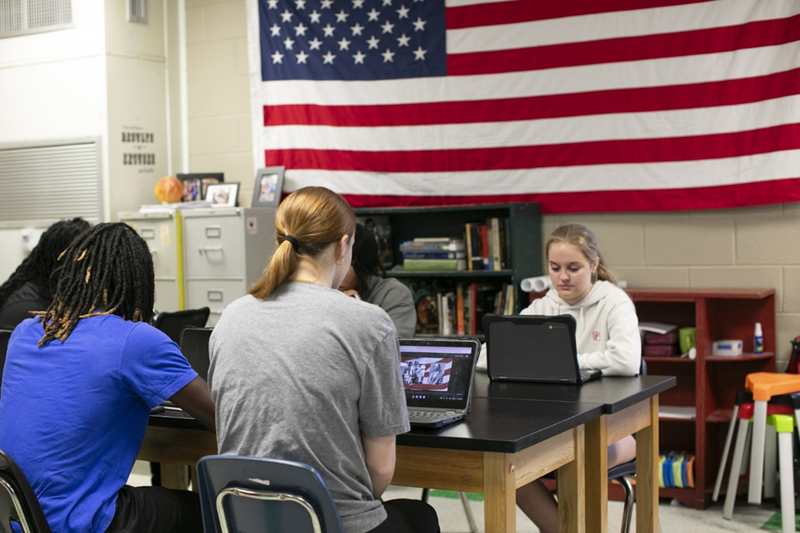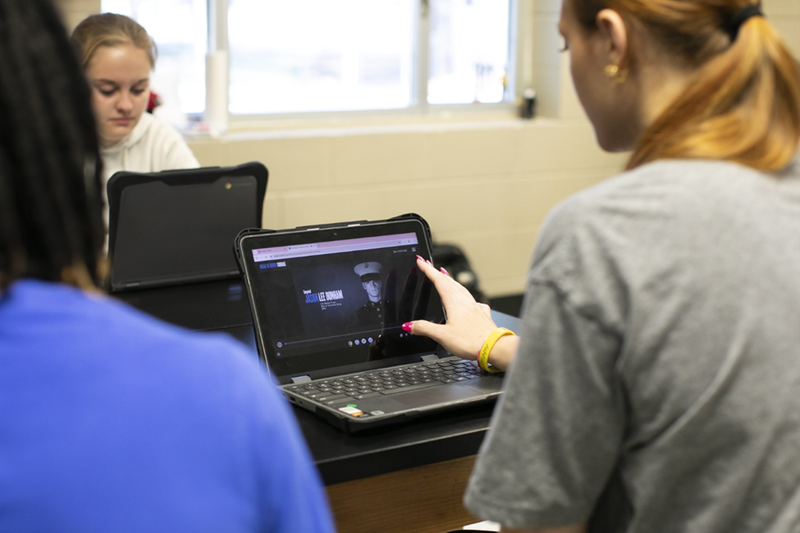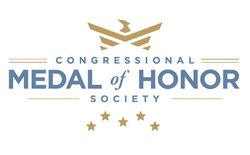Path to Honor, backed by the Congressional Medal of Honor Society’s Character Development Program, is a free platform designed to provide close-up views of historical and heroic actions by Medal of Honor Recipients to middle and high school students.
The experience asks students to trace the steps of Recipients who exemplified courage, sacrifice, patriotism, citizenship, integrity, and commitment. In a short, digital format, three modules demonstrate each of the six values embodied in the Medal of Honor, the nation’s highest award for military valor.
Through 18 different modules, students hear stories of the Recipients’ actions and share how they would react in the same situation. Students then learn how the Recipients responded and reflect on the values demonstrated—making a personal connection with the character value. After completing each value module, students will complete an open-ended reflection question and receive a certificate.
The platform sheds light on the values Recipients adhere to in times of struggle and how middle and high school students can live by those values. In turn, Path to Honor helps promote a positive school culture, supporting social, emotional, and behavioral learning goals and integrates character education into relevant cross-curricular subjects like history, civics or ELA.

Formats:
Students can access Path to Honor on any device with internet access. Computers, tablets, or phones can all be used to access the platform. Students visit the site to start—no login required.
Primary URL:
https://www.cmohs.org/path-to-honor/
Problem solved:
Cultivating a positive school culture requires a multifaceted approach that touches many aspects of a student’s educational experience – involving school staff, resources, professional learning and more. Educators are often conducting their own research into character development activities and lessons that contribute to school culture, all while finding when and where to address it during the school day.
Path to Honor supports character development by showing students how the values of Medal of Honor Recipients connect to their own experiences.
Since 1999, the Congressional Medal of Honor Society has recorded the living histories of more than 140 Recipients. Today, these stories form the inspirational core of the Character Development Program and now Path to Honor. More than 19,000 teachers nationwide have been trained to use the Character Development Program, and teachers report that the program leads to student skill improvement in collaboration, critical thinking, and personal reflection, and report that students are more likely to volunteer within the community and make sacrifices for others.

Grades/age range:
Path to Honor is designed for middle school and high school students (Grades 6 – 12).
Does your product address core/supplemental/special needs/extracurricular/professional development?
Path to Honor is a self-directed student resource that can be used in a variety of learning environments, whether as part of social studies curriculum, provided as an extra-curricular activity or assigned for extra credit.
While there are opportunities to use this new platform in the classroom, students can also complete Path to Honor independently. Like the lessons and activities of the Character Development Program, Path to Honor is an ideal tool for homeschool environments, unschooling, after-school programs, Scouts and more. Students passionate about history who are looking for ways to learn more about the stories of military heroes will find the activities engaging as well.
What subject, topic and/or standards is your product mapped to?
Path to Honor is cross-curricular and is relevant in subjects like history, civics or ELA. The platform can also be used in courses specific to character development and building social-emotional skills and civic responsibility.
Lesson time needed:
Path to Honor begins with a three-minute video introduction to the Medal of Honor. It contains three modules for each of the six character values, each of which take about 5 minutes to complete. It’s recommended to extend the content across a series of classroom lessons.
Pricing model:
Path to Honor is a free resource made possible by the Congressional Medal of Honor Society.
Additional services needed:
No additional services are required to access the Path to Honor program or the modules within.
What makes Path to Honor unique?
Character education is better experienced than it is taught. Unlike other platforms geared toward covering historical events and figures, Path to Honor takes a reflective and interactive approach, which allows students to connect their personal experiences to Recipient stories.
The platform can also serve as a starting point to learn more about each Recipient and their full story. Since the videos are only 2-3 minutes long, students can access more about their lives before and after their act of valor through the portal.
Characteristics:
Path to Honor is designed to create meaning for students through experience. Using a non-linear, interactive platform which relies on Fink’s Significant Learning Model, Path to Honor adds a human dimension and encourages users to become better students as they increase their fluency in learning as a process.
Here’s what users are saying:
“It fits in well with social studies and with ELA and puts an emphasis on those character traits and the Recipient, which I feel fits well with an educator’s curriculum, especially in social studies for the military aspect. I like it because you also have the data of what other people chose, and the kids really like to compare their responses.”
--Todd Hospodarsky, Social Studies Teacher, Monticello Community School District
Molly Hudgens, School Counselor, Sycamore Middle School - “When you first open the platform, you can tell it’s very easily student-driven. The opening video is only 3.5 minutes long, which may seem short, but students are accustomed to short-form videos…Just in the opening video you have people from all different backgrounds and ethnicities presented.”
-- Molly Hudgens, School Counselor, Sycamore Middle School











